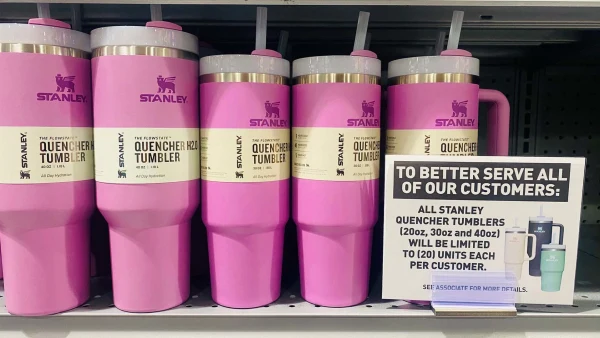The Stanley Cup Shows How Underrepresented and Underserved Consumers Drive Sales
Posted Feb 05, 2024
The Stanley Cup Shows How Underrepresented and Underserved Consumers Drive Sales
Brands grow when they expand their view of who their customer is.
EXPERT OPINION BY SONIA THOMPSON, INCLUSIVE MARKETING STRATEGIST AND CONSULTANT@SONIAETHOMPSONFEB 1, 2024
Cup maker Stanley has gotten a lot of attention over the past year on many different fronts. The big story is how consumers have responded to the tumblers and the sheer fandom that has caused them to sell out. Target employees have even gotten fired over them.
Another side of the story is from the marketing case study perspective, as commentators note the rapid growth the more than 100-year-old brand has had in the past five years once it started specifically catering to a new audience. In this case, that audience is largely female.
No matter which way you look at what's been happening with the Stanley brand, it is important to note that the Stanley cup's rapid growth is another proof point that underrepresented and underserved audiences are really growth levers for your brand. Simply put, when you expand your idea of who has the problem that your business solves to more identities, you'll find that being inclusive will increase your revenue.
I first got introduced to the Stanley brand through its thermoses. Every time my husband and I went to Argentina to visit family and friends, we were inundated with requests to bring Stanley thermoses so folks could have a consistent supply of hot water to drink their yerba mate each day.
That market is a far cry from the largely male outdoor adventurers or workmen that Stanley targeted for years, but it highlights that there are often groups of consumers who use and love your product, even if they aren't your original intended market.
Stanley's leadership was initially reluctant to expand their conception of their target customer.
Two women bloggers had to prove to Stanley's leadership that the product would sell to their audiences, which consisted of other women like them. When the bloggers sold 5,000 units in just a few short days, the brand started to pay attention.
When the Stanley team finally acknowledged that women could be among their ideal customers, things changed for them rapidly from a revenue standpoint. Expanding their customer base enabled them to go from $70 million to $750 million in annual sales in four short years.
How to grow by including more customers
Ditch the narrow view of who your ideal customer is. Start by making a list of the different types of people who have the problem your brand solves. Then choose which of those identities you'd like to start serving and make a plan to start engaging them and showcasing that they belong with your brand.
Of course, marketers need to be deliberate with regard to who they target so they can be effective.
Marketing to new customer groups doesn't mean you have to overhaul everything you're currently doing, or even develop new products, services, and experiences. Even small changes, such as making your visual imagery more inclusive, partnering with influencers and creators who have audiences that include communities you want to reach, or showing up at events where you're more likely to interact with different communities can be helpful.
Sometimes, winning new customers with identities that are part of underrepresented and underserved communities is really just about inviting them to try whatever it is you are offering. Lots of times consumers from underrepresented and underserved communities don't ever try a brand because they receive signals that the brand or the product isn't for them.
The craft beer market started seeing increases in their sales when they started marketing to women, Black, Latino, and Indigenous communities. Previously, they'd market only to a specific segment of White men. When the industry started to see growth stagnate, they made an effort to include and invite other communities and received a positive response in sales overall. All it took was inviting a different group to be their customer.
You can grow your brand by expanding your view of who your customer is. The more you strategically include customers with identities that you don't currently engage with, the more you'll see how marketing to them will have a positive impact on your sales.
